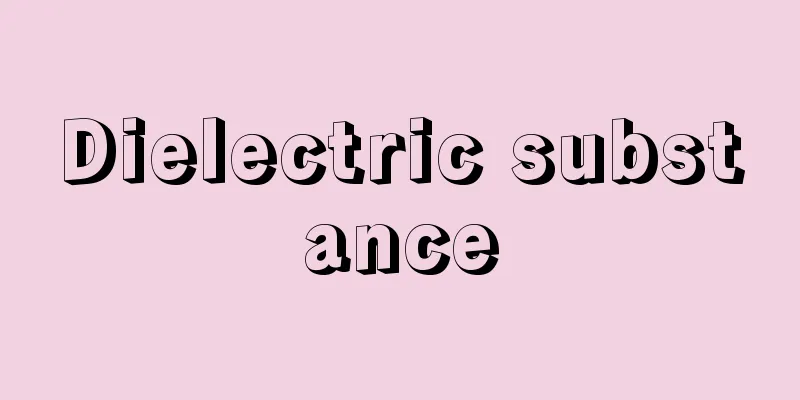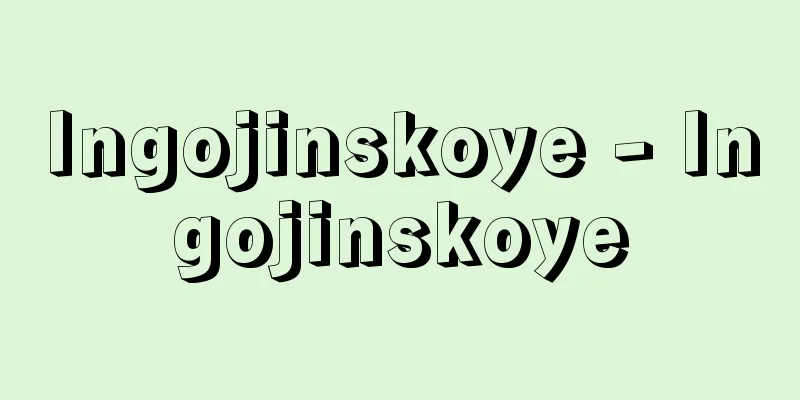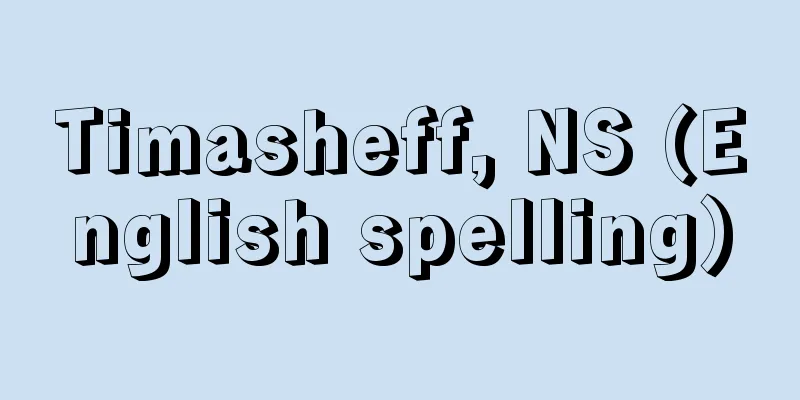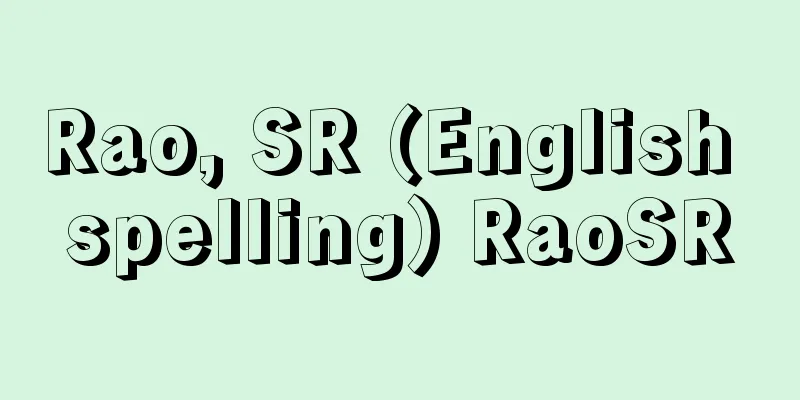Dielectric substance

|
The property of electric polarization (also called dielectric polarization or simply polarization) being induced in a material by an external electric field, and the property of electric polarization existing inherently, are called the dielectric property of a material ( ). A material that focuses on its dielectric property or uses its dielectric property is called a dielectric. The dielectric property of a material is usually clearer the higher the material's electrical insulation, so in concrete terms, dielectrics are often close to insulators. However, dielectricity and insulation are completely different properties, and an excellent dielectric material and an excellent insulating material are different substances. According to electromagnetism, the electric polarization P of a material, the electric flux density D of the material, and the electric field E are always related by the equation D = ε 0 E + P , where ε 0 is the dielectric constant of a vacuum. [Shozo Sawada] Dielectric ClassificationDielectrics are divided into paraelectrics and ferroelectrics, and correspondingly, dielectrics are divided into paraelectrics and ferroelectrics. [1] Paraelectrics Paraelectricity is the ordinary dielectric property, which is the property of only showing electric polarization, i.e. induced polarization, induced by an external electric field. A dielectric that shows paraelectricity is a paraelectric. As shown in (1), for paraelectric materials, D is usually proportional to E , and D = εε 0 E holds. Here, εε 0 is the absolute dielectric constant, and ε is the relative dielectric constant, which is also simply called the dielectric constant. Paraelectric materials include gases and liquids, but most important dielectric materials are solids. [2] Ferroelectrics As shown in (2), the relationship between D and E is a D - E hysteresis curve (also simply called a hysteresis curve) with the alternating current change of E. The characteristics of this curve are that D is different when E increases and when it decreases, D ≠ 0 even when E = 0, and D saturates for sufficiently large E. The fact that D ≠ 0 even when E = 0 in ferroelectricity means that electric polarization P exists. Moreover, as can be seen in the figure, the polarity of this polarization reverses with the reversal of the polarity of the electric field E. This type of polarization is called spontaneous electric polarization (or simply spontaneous polarization), and ferroelectricity can be said to be a property in which spontaneous polarization exists. In ferroelectricity, induced polarization also exists. Ferroelectrics are substances that exhibit ferroelectricity. Ferroelectrics almost always undergo a phase transition at their own specific temperature (usually when heated), changing from a ferroelectric state to a paraelectric state. This temperature is called the Curie temperature or Curie point. Ferroelectricity is only seen in crystals, and only in crystals with a special symmetry (crystal structure). Crystals are divided into those that exhibit piezoelectricity and those that do not, based on their symmetry, and those that exhibit piezoelectricity are further divided into those that exhibit pyroelectricity and those that do not. Crystals that exhibit pyroelectricity are called polar crystals, and they inherently have electric polarization in the broad sense, but in general polar crystals, this polarization does not reverse with the reversal of the electric field. Among polar crystals, those that have polarization that reverses with the electric field, i.e. spontaneous polarization, are ferroelectrics. There are a great many polar crystals in nature, but only a small number of them are ferroelectrics. To date, approximately 250 types of ferroelectrics are known. [Shozo Sawada] Practical value of dielectricsDielectrics are used in a wide range of applications as capacitor materials, and are also important as piezoelectric and pyroelectric materials. Ferroelectrics are often used as piezoelectric and pyroelectric materials. Ferroelectrics are also used as electrostrictive and electro-optical materials. [Shozo Sawada] "Electrical Properties" edited by Toshihiro Okada (Experimental Physics Lectures 16, 1977, Kyoritsu Publishing) [Reference] |(1) When a DC electric field is applied to a plate-shaped sample with electrodes on its surface, positive and negative charges accumulate on the electrodes, bound charges ⊖ and ⊕ appear on the surface of the sample, and electric polarization is induced within the sample. (2) Even if a DC electric field is not applied, bound charges ⊖ and ⊕ appear on the surface of the sample, and in some cases, positive and negative charges accumulate on the electrodes just enough to cancel these out . Dielectric properties of materials (Figure A) ©Shogakukan "> Hysteresis curve of dielectric material (Figure B) Source: Shogakukan Encyclopedia Nipponica About Encyclopedia Nipponica Information | Legend |
|
物質の中に電気分極(誘電分極または単に分極ともいう)が外部電界で誘起される性質、および本来電気分極が存在する性質が、物質の誘電性である()。その誘電性に注目され、あるいはその誘電性が利用される物質が誘電体である。物質の誘電性は、普通この物質の電気絶縁性が高いほど明快であるので、具体的な物質としては、誘電体は絶縁物に近いものが多い。しかし、誘電性と絶縁性とはまったく別の性質であり、優れた誘電材料と優れた絶縁材料とは別の物質である。 電磁気学によると、物質の電気分極P、物質の電束密度Dと電界Eとの間には、つねにD=ε0E+Pという関係式が成り立つ。ここにε0は真空の誘電率である。 [沢田正三] 誘電体の分類誘電性は常誘電性と強誘電性とに分けられ、これに対応して、誘電体は常誘電体と強誘電体とに分けられる。 〔1〕常誘電体 常誘電性は普通の誘電性であって、外部電界によって誘起される電気分極すなわち誘起分極だけを示す性質である。常誘電性を示す誘電体が常誘電体である。 の(1)に示すように、常誘電体では、普通DはEに比例しD=εε0Eが成り立つ。ここに、εε0は絶対誘電率であり、εは比誘電率であるが単に誘電率ともいわれる。常誘電体としては、気体、液体のものもあるが、誘電材料として重要なものはほとんど固体である。 〔2〕強誘電体 強誘電性は、の(2)に示すように、Eの交流的変化に伴って、DとEとの関係はD-E履歴曲線(単に履歴曲線ともいう)となる。この曲線の特色は、Eの増加の際と減少の際とでDが異なること、E=0でもD≠0であること、十分大きなEに対してDの飽和がみられることである。強誘電性でE=0でもD≠0であることは、本来電気分極Pが存在することである。かつ、図でわかるように、この分極の極性は電界Eの極性の反転とともに反転する。このような分極は自発電気分極(または単に自発分極)とよばれ、強誘電性は自発分極が存在する性質ということができる。強誘電性には誘起分極も存在する。強誘電性を示す物質が強誘電体である。強誘電体はほとんどつねに、それぞれに特有の温度で(多くは加熱の際)相転移をおこして、強誘電性状態から常誘電性状態へ移る。この温度はキュリー温度またはキュリー点といわれる。強誘電性は、結晶にだけ、それも特殊な対称性(結晶構造)をもつ結晶にだけみられる。結晶はその対称性から圧電性を示すものと示さないものとに分かれ、圧電性を示すものはさらに焦電性を示すものと示さないものとに分かれる。焦電性を示す結晶は極性結晶といわれ、これには本来広義の電気分極が存在するが、一般の極性結晶ではこの分極は電界の反転とともに反転はしない。極性結晶のうちで、電界とともに反転する分極すなわち自発分極をもつものが強誘電体である。自然界に極性結晶はきわめて多数存在するが、それらのうちで強誘電体であるものは少数である。今日までに約250種類の強誘電体が知られている。 [沢田正三] 誘電体の実用価値誘電体は、コンデンサーの材料としてきわめて広範囲に使用されているし、圧電材料、焦電材料としても重要である。圧電材料、焦電材料としては強誘電体が用いられることが多い。強誘電体は電歪(でんわい)材料、電気光学材料などにも用いられる。 [沢田正三] 『岡田利弘編『電気物性』(『実験物理学講座16』1977・共立出版)』 [参照項目] |(1)表面に電極をつけた板状の試料に直流電界がかかると、電極には全電荷+、-がたまり、試料の表面には束縛電荷⊖、⊕が現れ、試料内には電気分極が誘起される。(2)直流電界がかからなくても、本来試料表面に束縛電荷⊖、⊕が現れており、電極上にはちょうどこれらを打ち消すだけの全電荷+、-がたまるものもある©Shogakukan"> 物質の誘電性〔図A〕 ©Shogakukan"> 誘電体の履歴曲線〔図B〕 出典 小学館 日本大百科全書(ニッポニカ)日本大百科全書(ニッポニカ)について 情報 | 凡例 |
Recommend
Tangier - Tangier (English spelling)
A port city facing the Strait of Gibraltar in the...
Thorarensen, B.
...It is part of the lineage of medieval European...
Queen of Sheba
A character in the Old Testament (1 Kings, Chapte...
Compost - Haigodo (English spelling)
Potted plants have limited root development, so th...
Photoelectric element - opto-electronic element
An element that combines the behavior of light an...
Aphyosemion australe (English spelling)
...It is not necessarily easy to breed. (a) Lyret...
Chaetodon unimaculatus
A marine fish of the family Chaetodontidae in the ...
Garcinia
...An evergreen fruit tree of the Hypericaceae fa...
Genpo Tsujihara
1622-? A Confucian scholar and writer of kana zos...
Henan Tenmoku
...From the late Northern Song to the Jin dynasty...
Vitality - energy
〘 noun 〙① The power that is the basis of activity....
Wheat and Soldiers - Mugi to Heitai
A novella by Hino Ashihei. It was first published...
Curculigo latifolia (English spelling) Curculigo latifolia
…[Tetsuichi Yahara]. … *Some of the terminology t...
Semiconductor laser - Semiconductor laser
A general term for lasers made of semiconductors. ...
Shinchugumi
This unit rose up in November 1863 (Bunkyu 3) in t...









